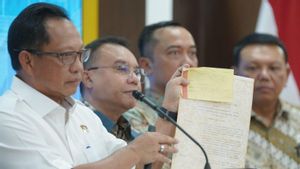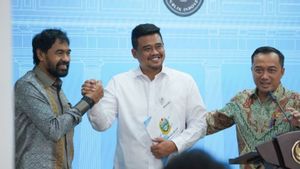YOGYAKARTA - Madura, an island with a rich and unique culture, has a dark history that cannot be separated from its identity, namely Carok. So how did the history of Carok initially occur?
To understand why carok is difficult to administrative, we need to explore the long history of this tradition and analyze the social, cultural and economic factors that are still relevant today.
Menurut penelitian yang berjudul 'Tradisi Carok di Madura (Perspektif etik))' dilansir dari Digilib UIN SUKA, kurok adalah pertarungan akibat konflik yang menexikan harga diri, melibatkan individual, kelompok, atau clan dengan menggunakan senjata.
However, Carok does not have official rules because it is considered criminal and violates the law in Indonesia. But for the Madura people, Carok is often a way of maintaining honor and resolving serious conflicts.
During the Cakraningrat, Jokotole, and Panembahan Semolo governments in Madura, the term Carok was unknown. At that time, similar conflicts resembled a chivalrous duel with weapons such as swords or keris.
In Ancient Kawi language, "Carok" means "fight" and usually involves two individuals, two extended families, or even villagers. This conflict often occurs in Bangkalan, Sampang, and Pamekasan areas.
Carok triggers vary, including competition for power, infidelity, land disputes, or hereditary grudges.
Before continuing, also read the article discussing Saman Dance: History and Facts
Interestingly, in the 12th century AD in the era of the Madura Kingdom under Prabu Cakraningrat, the 14th century when it was led by Jokotole, to the 17th century during the Semolo Panembahan, the term Carok was not yet known.
Carok on Madura Island became known during the Dutch colonial period, around the 18th century AD. The courage to fight arose after Pak Sakera, a resistance figure, was arrested and sentenced to hang in Pasuruan, East Java.
Initially, this form of resistance was carried out by small communities againstciples, using sickles as weapons.
However, this courage was used by the Dutch to divide society. They provoked the Blater family group, known as heroes and often an accomplice to the invaders, to carry out Carok.
As a result of the Dutch incitement, Carok often occurs among the people themselves, which actually comes from the same nation. The role of the Dutch in triggering this conflict reflects a strategy of fighting against each other to weaken people's solidarity
During the Carok era, the weapon used was no longer a sword or keris like in the ancient Madura era, but a sickle.
The use of this sickle was influenced by the Dutch, who deliberately gave the weapon to the Blater group to damage the image of the Sakera fighters.
Please note, Sakera itself is a rebel hero from the santri and Muslim circles who obey, and uses sickles as a symbol of the resistance of the small people to colonialism.
On the other hand, the Dutch used sickles to image them as weapons for heroes and criminals. This strategy managed to penetrate the culture of some Madura people.
Thus, Carok then became the philosophy of life to solve various problems, such as infidelity, land disputes, or other conflicts, on the grounds of maintaining self-esteem.
SEE ALSO:
Madurese themselves have the motto "Lebbi Begus Pote Tollang E Tembeng Pote Matah," which means it is better to die than to bear shame. This principle becomes the foundation of their culture, so that conflicts are often resolved through Carok.
Apart from the history of Carok, follow other interesting articles too. Want to know other interesting information? Don't miss it, keep an eye on the updated news from VOI and follow all of its social media accounts!
The English, Chinese, Japanese, Arabic, and French versions are automatically generated by the AI. So there may still be inaccuracies in translating, please always see Indonesian as our main language. (system supported by DigitalSiber.id)
















